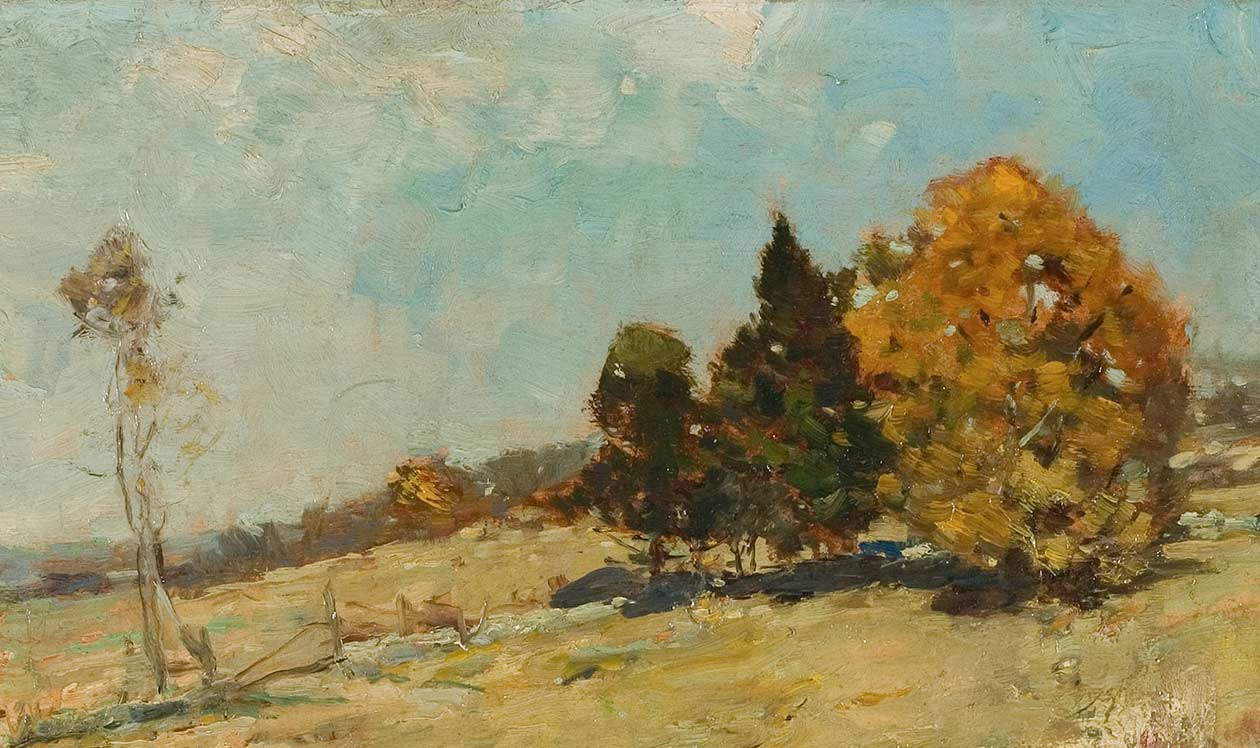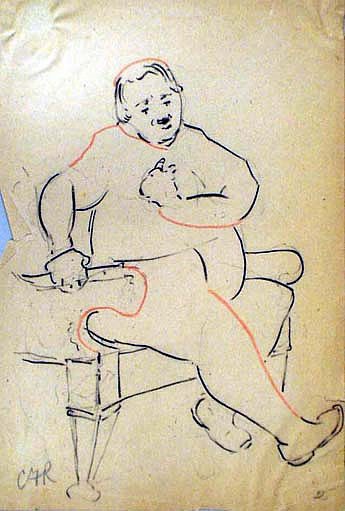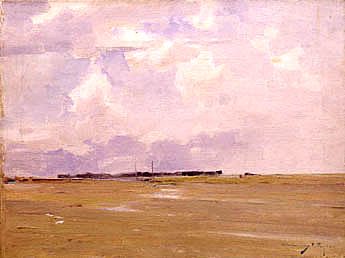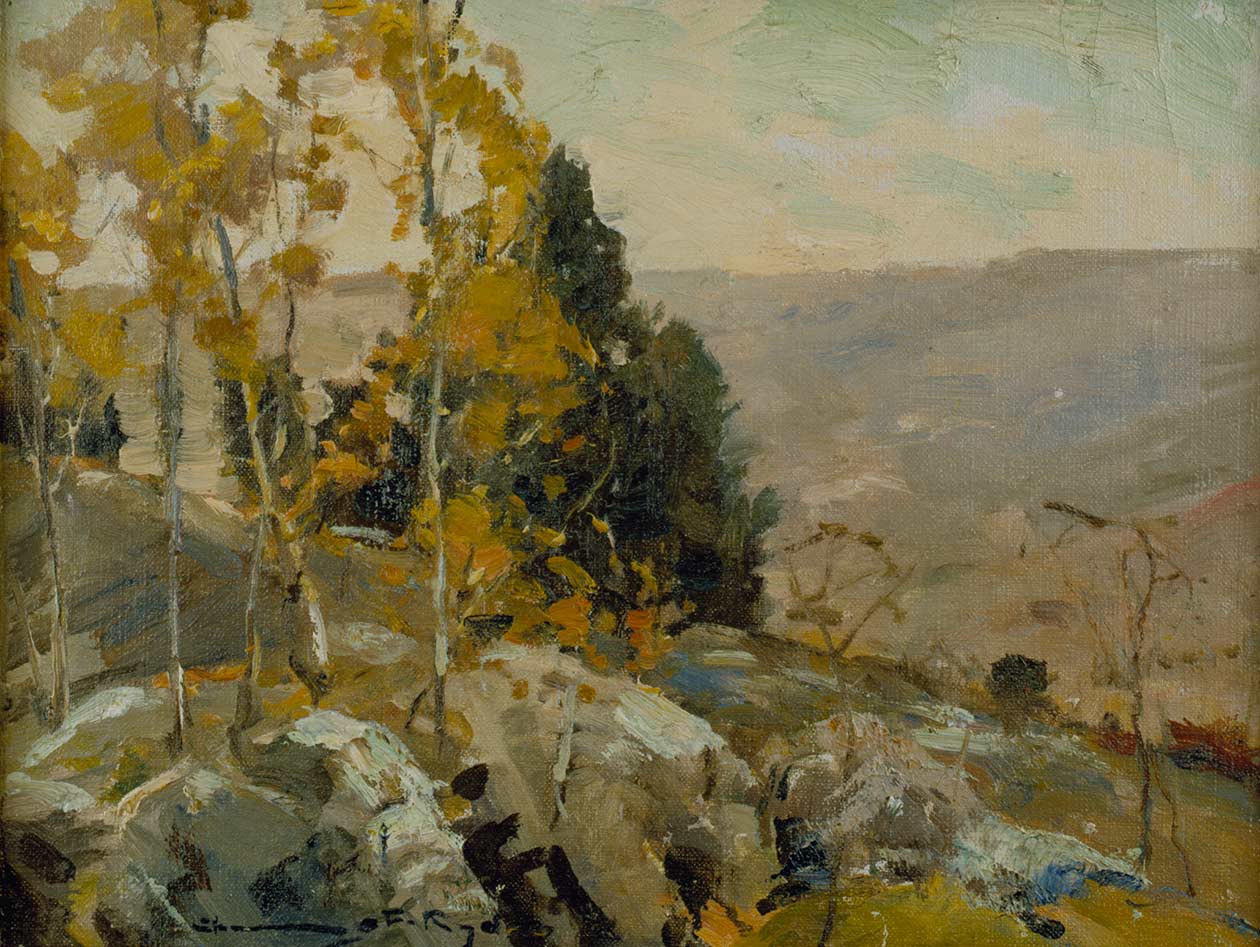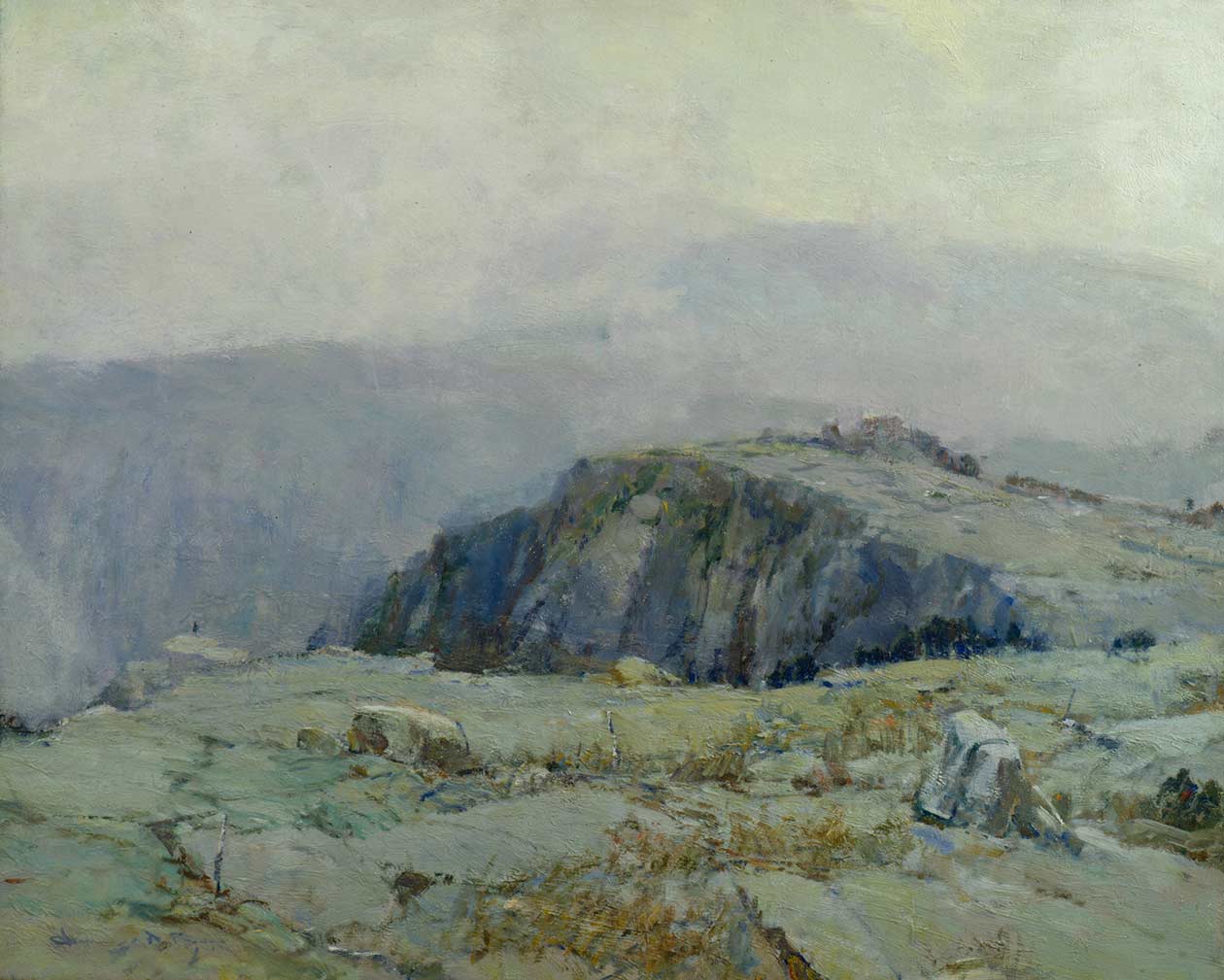Collections
In Situ: The Painted Panels
- Museum Hours: Tuesday through Sunday, 10am to 5pm
Chauncey Foster Ryder (1868-1949)
Meadow Landscape
Chauncey Ryder’s Meadow Landscape dates to 1910 or 1911, the only years that the artist was in Old Lyme. He exhibited in the art colony’s annual end-of-summer exhibitions in those years.
This autumn view, presumably an Old Lyme scene, represents Ryder well. After several years in Paris in the early 1900s, he developed a sketch-like, sparsely painted Impressionism into a distinctive landscape style that often depicts mountains or, as in this instance, an upland meadow. His palette became known for its “Ryder greens,” seen here in combination with complementary golds and blues.
His work has the freshness of plein-air painting, but it was not realism that Ryder was trying to capture. “I paint by feeling,” he said, and people recognized that he was painting interpretations, not portraits, of nature. Although a painting like this looks more dreamy than real, it implies, as a contemporary wrote of Ryder’s art, “that nature is imperturbable and everlasting – far above the tribulations of a ‘civilized’ world.”
CHAUNCEY FOSTER RYDER (1868-1949)
MEADOW LANDSCAPE
OIL ON WOOD PANEL
GIFT OF THE ARTIST
Although he was born in Danbury, Connecticut, and grew up in New Haven, Ryder ultimately preferred more rugged terrain than that of his native state.
What prompted his visits to the Griswold House is unknown, but he may have been seeking a summer studio, for even in 1910 he also visited the artistic enclaves of Ipswich, Massachusetts; Monhegan Island, Maine; and Wilton, New Hampshire. In 1911 he is thought to have spent only a little time in Old Lyme, and afterward he stayed every spring through fall at a place he bought in Wilton, near Mount Monadnock.
Ryder went on to win numerous awards, including a silver medal at the Panama-Pacific Exposition in 1915 and a gold medal at the Paris International Exposition in 1937. Although best known for his oil paintings, one of which was purchased in Old Lyme by the first Mrs. Woodrow Wilson, he was also a proficient draftsman, printmaker, and watercolorist.

